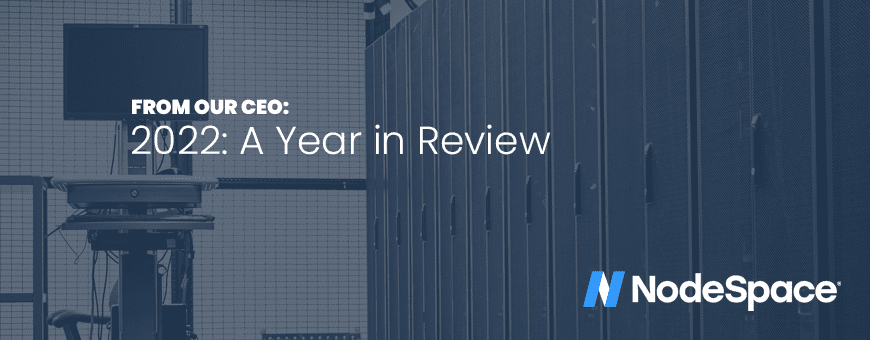
First, I want to wish you, our team, friends, and family a very Happy & Merry Holidays! Whether you celebrate Hanukkah, Christmas, Kwanza, Festivus, Winter Solstice, or your own thing, I hope you are safe, well, and enjoy it!
Reflections on year
At this time of year, I love looking back and reflecting on the year. For the company, I look through all of our issues (“issues” are just internal tickets we use to track things. I wrote about how I use MantisBT for this on my personal blog, “Bug trackers aren’t just for software developers” (my site is IPv6-only so if you can’t access it, your ISP doesn’t support IPv6 yet)) across all of our projects – Business Ops, TechOps, our software development teams – and I look at how many issues were opened, how many were resolved, what’s still open, and what’s backlogged. I’ve been doing this for the last several years. As a leader, it’s important for me to know what is going on and how best to direct the team in the next year. Since we’re a private company, I don’t write an annual report or letters to shareholders. Instead, I take the opportunity to talk to you, our clients, and share the accomplishments, and even failures, of our company.
Just some quick stats from our issue tracker:
- Business Ops: 23 issues opened / 16 issues closed
- TechOps: 152 issues opened / 140 issues closed
- Software Development: 43 issues opened / 40 issues closed
If you’re wondering why TechOps has a lot of issues, it’s because that is the core of our business. When servers get provisioned, when our own servers need fixing, when we want to experiment or deploy new software, it all goes into a TechOps issue. We’ve also been on a consolidation effort to reduce the number of duplicate services. We’re currently working on an internal issue tracker that not only can house our internal issues, but also link up to our client-facing help desks and our team can manage work orders, issues, and tasks from one interface. It’s being built with GNU/GPL software, so we will be releasing it according to the terms of the license.
Business growth and opportunities
This year was one of our biggest years ever. Dedicated server growth was up over 4000%, VPS growth was up over 8000%, and we saw a decline in shared hosting, but this is a metric we don’t really track as shared hosting is the doorstep for clients to experience our other services. We typically convert shared hosting customers to dedicated or VPS customers.
One of the factors that lead to our dedicated server growth was our focus on Proxmox VE hosting. We signed up a lot of new customers specifically on our Proxmox VE servers and special configurations. In 2023, this is going to be a huge focus for NodeSpace. Our goal is to be an official Proxmox Hosting Partner. To achieve this, it is going to require a lot of hardwork and dedication. That is where my focus is going to be.
Importance of self-hosting & owning our data
2022 really showed us the importance of owning our data. Back in April, Elon Musk announced his intentions to purchase the social media site Twitter. The board of directors accepted his bid of $44 billion and the offer was placed in motion. After numerous stalls and attempts to back out of the deal, he was forced to purchase it and at the end of October, he officially took over as the new owner. After laying off more than half of the employees, a blunder with paid verifications, and then attacking free speech to the point of banning journalists in December, a lot of people decided enough was enough and migrated to the federated social media network of Mastodon. We even launched our own server, nodespace.social (and the name is actually a play on “hooli.xyz” as I was re-watching HBO’s Silicon Valley and as I was considering potential names, that one came to mind. Also, I wanted to use a short domain just because of the way Mastodon handles account federation.). Also, our server is public and free to join! We fully abide by the Mastodon Server Covenant and we plan on keeping this service active for a long time. We’ve even moved our social media accounts to it (@[email protected], @[email protected], and @[email protected]). We even took the opportunity to spin up some fun accounts too. Our Linux admin team also has an account that is worth following for some behind-the-scenes look at running a hosting company. Follow them at @[email protected]. One of the major first things people noticed on Mastodon is that the content coming through isn’t blessed by an algorithm created by Big Tech. On Mastodon, people are the algorithm. People decide which posts get boosted. People decide which hashtags trend. It’s people.
By being able to run our own Mastodon instance, we “own our data” and we’re free from other social media networks. We’re still there, by the way, and we’ll stay until the end. But we want to show that even with Mastodon, you don’t need to join a big server like mastodon.social to take part. Anyone on our server can interact with the others in the entire federated universe. That is why we encourage our customers to design their own websites, host their own email, run their own services. 2022 was a year about taking back the Internet from Big Tech and giving power back to the people.
I have been self-hosting before it was even a coined term. Same with having a home lab… or really, a home data center (because a lab is for experiments. If you cannot reboot a server in the middle of the day, you’re not running a lab – you’re running a production environment!). I have always preferred it that way. I’ve used services in the past, like hosted site builders, but I always found them limiting. They injected weird code, collected random data, created bloat. But self-hosting took me on a journey from being a kid who couldn’t even identify a VGA port on a computer (yes, this really happened once when I was just getting into things. My mom talked to one of the tech departments where she worked and they said I could come in and shadow. The department manager took me to a supply closet, grabbed an old PC, and brought it back to an empty desk in the office. He asked me to identify parts as we re-built it so I could have a workstation for the day. He asked me to find the VGA port. I think I pointed to either the serial or parallel port!) to writing PHP code, compiling software for managing systems, and building servers. When our clients say they can’t do something, I like to reassure them they can. Building a website is hard. It’s supposed to be! But there was a time I couldn’t figure out how to even get my FTP settings right – so it’s perfectly fine that WordPress can be a bit of a challenge! You’ll learn new and fun skills along the way!
Company growth and outlook
This year, we grew a lot as a company. We decided to merge VoxVM into NodeSpace and we acquired a VPS provider, sshVM, at the end of the summer. Currently, we’re still working on plans for sshVM – such as getting an updated brand, upgraded servers, providing a mix of OpenVZ, LXC, and KVM VPS servers (powered by Proxmox, of course). We’re keeping sshVM lean on purpose. In it’s entire 11 year history, it has never offered shared or reseller cPanel hosting, dedicated servers, domain names, SEO, email hosting, SSL certificates, or anything else. Just OpenVZ VPS containers. We want to continue this, so the only new items we have made available are SSL certificates. But the main product will be Linux VPS servers. After all, the name is sshVM or “Secure Shell Virtual Machines”.
Software development
We also took a huge leap this year with developing software. We developed and released:
- WHMCS Hook: ReportMaxMindFraud (not original, but developed fixes)
- WHMCS Hook: OpenFraudTicket
- WHMCS Module: Support PIN
- WHMCS Module: OVH IP Manager (internal, proprietary, still under development)
Whether it was fixing bugs, adding new features, or writing a whole WHMCS module from the ground up, it was exciting! We still have some other projects we’ve been working on as well, such as CORE, that is not yet ready, but we hope to start releasing parts and pieces soon.
Service enablement
Additionally, we did some work on automating Proxmox VE with Terraform and released a sample project to help people turn their Proxmox VE into Infrastructure as Code.
New services
On our service front, we launched an exciting new service – Managed Servers. In the early days of Xinsto, and up through 2021, Xinsto was a managed service provider. Since we have the managed service experience, we launched managed services for servers. Whether they are hosted with us, in your own data center, or in the cloud, we provide support, management, monitoring, backup, and more. Since this service was just launched about a month ago, we haven’t seen much interest in it, but that is expected on newly launched services. I’m confident we’ll see this service grow.
Wrap-up
That is my update for 2022. I could go on for a long time, but I wanted to at least share our really exciting parts of the last year. I am looking forward to what 2023 brings us and I wish you all a very Happy New Year!
I sincerely wish you the best in your resolutions and goals, and I hope you are able to achieve them! If you need any technological assistance, my team and I are here to humbly serve you and help you reach your goals and overcome challenges.



